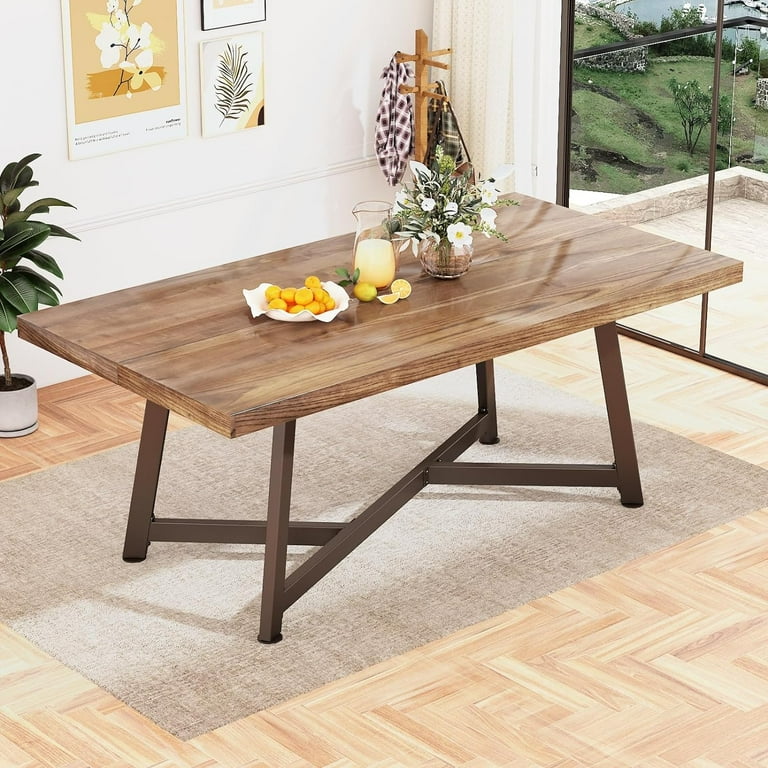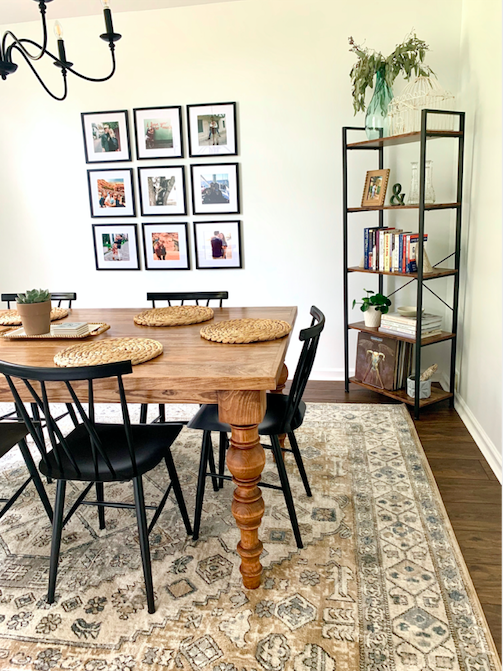Add Charm and Elegance to Your Space with Distinct Dining Room Table Legs
Add Charm and Elegance to Your Space with Distinct Dining Room Table Legs
Blog Article
From Conventional to Modern: Find the Ideal Dining-room Table Legs for Your Design
The option of dining-room table legs plays an essential role in specifying the overall character of your room, connecting the gap in between typical workmanship and modern-day visual appeals. While timeless designs such as cabriole and turned legs stimulate a sense of classic sophistication, modern designs like barrette and geometric choices offer a possibility for striking aesthetic interest. Reviewing the appropriate balance in between these styles calls for a nuanced understanding of your existing decoration and personal taste. As you consider these components, the question continues to be: just how can you flawlessly integrate these varied leg styles to develop a harmonious dining experience?
Comprehending Table Leg Styles
The range of eating room table leg styles can substantially affect both the aesthetics and functionality of the space. Each leg style adds unique functional features and visual components, dealing with diverse design preferences and use demands. Comprehending these designs is essential for picking the right eating table that aligns with your general interior decoration vision.
As an example, conical legs use a tidy, timeless appearance that can boost an area's elegance, while stand bases offer security and maximize legroom, making them ideal for smaller rooms. Barrette legs, a characteristic of mid-century contemporary style, introduce a commercial flair, permitting a ventilated, open feeling. Trestle legs evoke rustic beauty, giving durable support and a sense of eternity.
Wood legs can bring heat and appearance, whereas steel options usually share a smooth, contemporary vibe. Ultimately, recognizing table leg styles is important for creating a cohesive eating area that mirrors individual style while making certain usefulness and convenience.
Typical Table Leg Options
When choosing eating space table legs, typical choices frequently embody classic style and workmanship. These layouts mirror an abundant heritage and a dedication to high quality, making them perfect for those who appreciate classic appearances.
Among one of the most renowned conventional leg designs is the cabriole leg, identified by its graceful bent shape. This style commonly includes attractive carvings and is most frequently found in Queen Anne and Chippendale furnishings. One more preferred alternative is the turned leg, which boasts a collection of smooth, rounded forms that provide a timeless appearance while keeping stability.
Furthermore, the straight leg, while basic, uses a unadorned and strong structure that can mix flawlessly with a selection of tabletop designs. For those drawn to ornate describing, claw-and-ball feet legs evoke a sense of splendour and can work as a magnificent focal point in any type of eating space.
Finally, stand bases, although not purely legs, provide a different typical option that enables sufficient legroom and can be beautifully sculpted. Each of these standard leg styles contributes to the general check my site atmosphere of a dining-room, weding feature with aesthetic allure.

Modern Table Leg Styles
Modern table leg designs supply a varied series of styles that highlight cutting-edge products and tidy lines. These designs usually prioritize capability while working as striking prime focus within a dining space. Minimal visual appeals are common, with legs crafted from materials such as steel, glass, and engineered wood, which add to a modern and ventilated feeling.
One prominent layout is the barrette leg, characterized by its slender, conical structure that gives stability without overwhelming the tabletop (dining room table legs). This design is often located in mid-century contemporary furniture and can effortlessly enhance different eating table forms. One more pattern is using geometric shapes, where legs might handle unbalanced or angular forms, adding visual rate of interest and a touch of virtuosity

Blending Styles for Distinct Rooms
Frequently, property owners look for to develop unique dining areas that show their personal design by mixing numerous style elements. This strategy permits the consolidation of diverse aesthetics, leading to an unified yet distinct setting. As an example, pairing a rustic wooden table with streamlined, modern-day metal legs can develop a distinctive contrast that boosts the space's overall appeal.
Additionally, incorporating vintage table legs with modern table tops can stimulate a sense of history while maintaining a modern perceptiveness. Such mixes not only display individual taste but also urge creativity, allowing homeowners to curate a space that really feels both individual and welcoming.
Color plays an essential duty in this mixing procedure; selecting table legs that match or contrast with the existing color design can boost aesthetic rate of interest. Whitewashed legs can soften the daring of a dark table surface, producing a balanced aesthetic.
Tips for Choosing the Right Legs
Selecting the right table legs is necessary for attaining both performance and aesthetic appeal in your dining space. Begin by considering the overall style of your room. Conventional setups take advantage of legs that include elaborate carvings or transformed designs, while contemporary spaces may ask for streamlined, minimal styles.
Following, evaluate the elevation and stability of the legs. dining room table legs. Conventional table range in between 28 to 30 inches in elevation, so make certain the legs match this measurement for comfort. In addition, robust products, such you could check here as hardwood or steel, can improve security and longevity
Examine the leg form too-- choices include directly, tapered, or stand designs. Straight legs offer a traditional look, while tapered legs can add a touch of elegance. Pedestal bases give ample legroom and are suitable for smaller spaces.
Final Thought
In recap, selecting the optimal dining-room table legs calls for cautious factor to consider of both standard and modern-day styles. Conventional alternatives such as cabriole and turned legs supply ageless sophistication, while modern layouts like hairpin and geometric forms provide a modern touch. By harmonizing leg style, elevation, and material with the overall décor, a natural and inviting atmosphere can click for source be attained. Inevitably, the selected table legs must mirror the wanted aesthetic, boosting the eating experience within the area.
The selection of eating room table leg designs can considerably influence both the visual appeals and performance of the room. Ultimately, comprehending table leg designs is crucial for developing a cohesive dining location that reflects personal style while making sure functionality and convenience.One of the most iconic standard leg styles is the cabriole leg, identified by its graceful curved form. Straight legs provide a traditional appearance, while conical legs can add a touch of style.In summary, choosing the optimal eating area table legs requires cautious factor to consider of both standard and modern-day designs.
Report this page